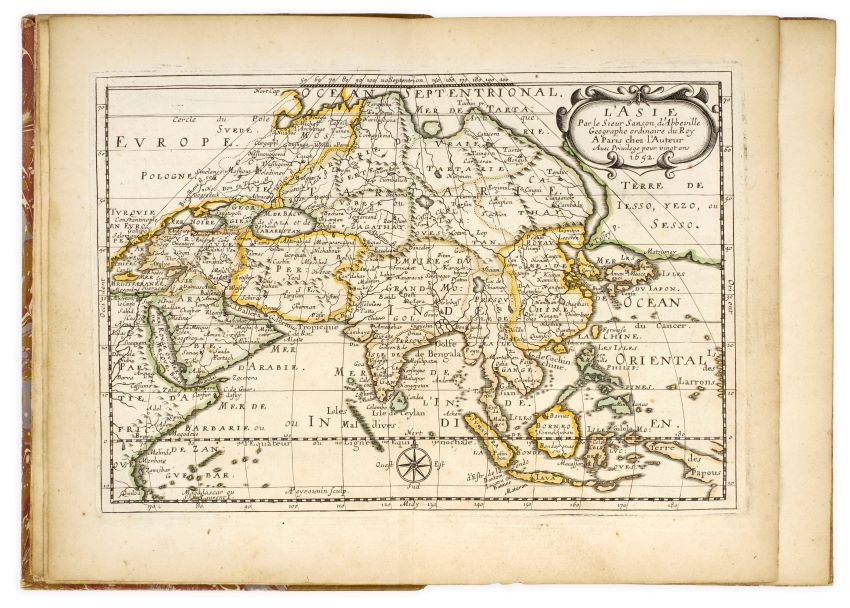
exploration fever in West Africa
DUNCAN, John.
Travels in western Africa, in 1845 & 1846. Comprising a journey from Whydah, through the kingdom of Dahomey, to Adofoodia, in the interior. To which is now first added, some account of the last expedition to the Niger … Third edition.
London, Richard Bentley, 1849.
2 vols, 8vo, pp. xiv, [2], 304, with frontispiece portrait, folding map, and 1 plate; ix, [3], 366, with frontispiece, 1 plate, and 2 woodcuts in text; some foxing and toning; overall good in original green cloth, spines lettered in gilt, covers blocked in blind, advertisements to pastedowns; spines sunned, some wear to extremities, vol. 2 lacking front free endpaper

Added to your basket:
Travels in western Africa, in 1845 & 1846. Comprising a journey from Whydah, through the kingdom of Dahomey, to Adofoodia, in the interior. To which is now first added, some account of the last expedition to the Niger … Third edition.
Third edition recounting the West African expeditions of the Scottish traveller John Duncan, including the first appearance of Duncan’s account of the Niger expedition.
Having initially enlisted in the army, Duncan ‘next obtained an appointment as master-at-arms in the Albert, which with the Wilberforce and the Soudan sailed on the Niger expedition in 1842. On the voyage out he was wounded by a poisoned arrow in a conflict with the natives at the Cape de Verde Isles. Duncan held a conspicuous position in all the treaties made with the native chiefs. He was selected to march at the head of his party, in the cumbrous uniform of a lifeguardsman, when the heat was fearful even to the natives themselves. When at Egga, the highest point reached by the Albert on the Niger, he ventured upon an exploration further up, taking a few natives only, but sickness compelled the abandonment of the project. On reaching Fernando Po Duncan was attacked by fever, the effects of which were aggravated by his previous wound. Of three hundred in the Niger expedition, only five survived, and Duncan reached England in a most emaciated condition.
‘As soon as his health improved Duncan proposed to penetrate the unknown land from the western coast to the Kong mountains, and between the Lagos and Niger rivers. His plans were approved by the Geographical Society, and the lords of the admiralty granted him a free passage in the Prometheus, which left England 17 June 1844, and reached Cape Castle 22 July following. After an attack of fever he commenced his journey from the coast to Whydah, and afterwards made the unexampled feat of a passage through the Dahomey country to Adofidiah, of which he sent particulars to the Geographical Society, dated 19 April and 4 Oct. 1845. He was refused a passage through the Ashantee country, but was favourably received by the king of Dahomey. Another attack of fever was followed by a breaking out of the old wound, and Duncan made preparations to amputate his own leg. He succeeded, however, in returning to Cape Coast. There, early in 1846, he planned a journey to Timbuctoo. Funds to assist him were being forwarded by his friends in England, when his health compelled him to return, and he sailed for home in February 1846’ (DNB).
Duncan first published an account of his travels in 1847. This, the third edition, was published two years later, shortly before his death in November 1849. It is the first edition to contain his account of the Niger expedition.
Abbey, Travel 285 (first edition).

